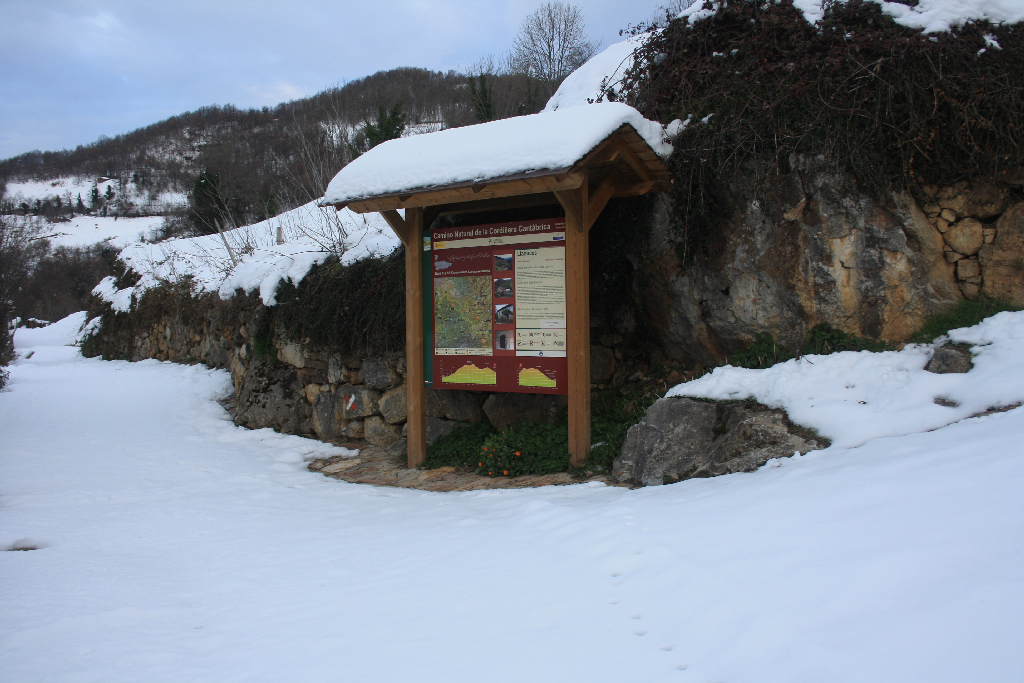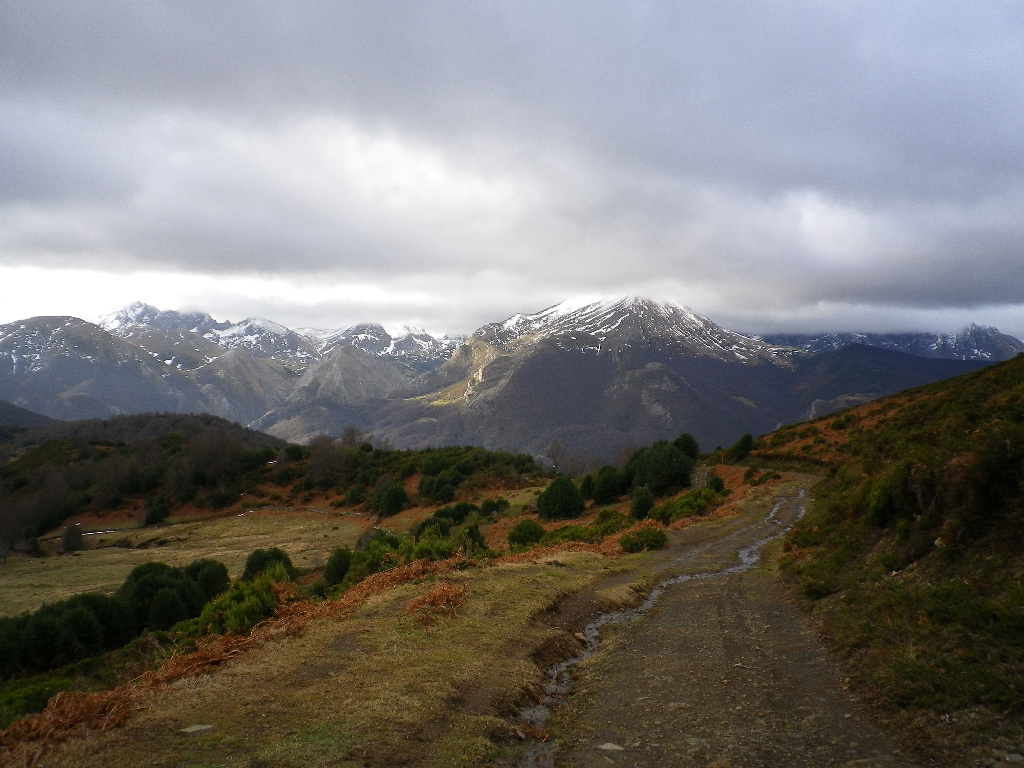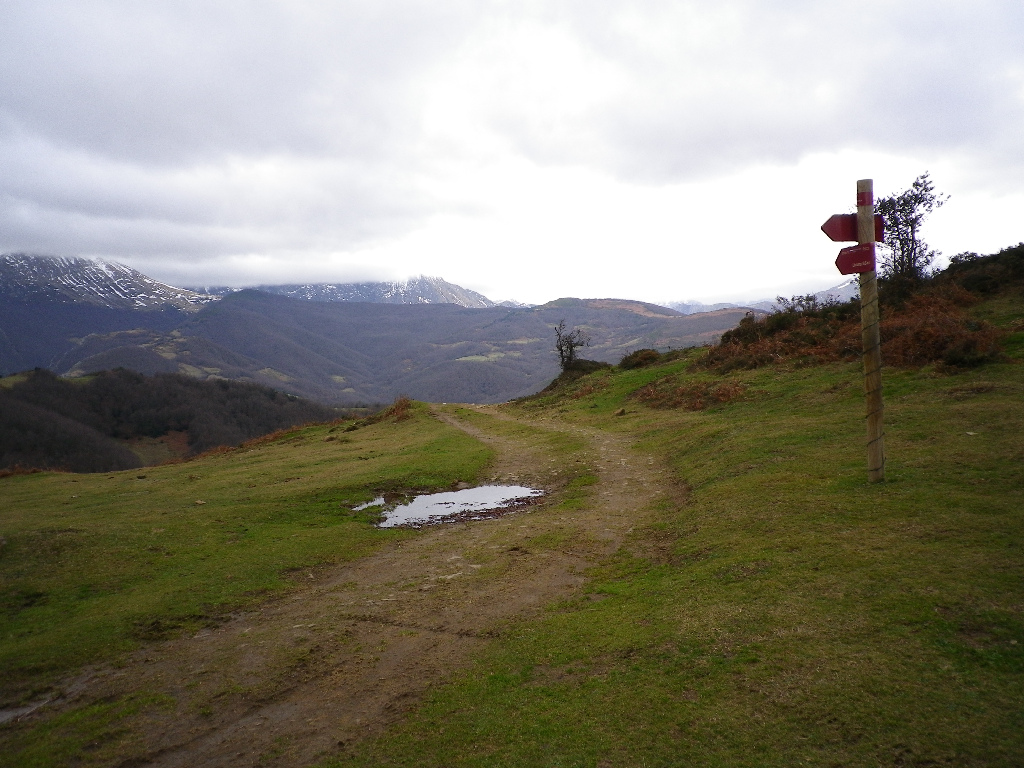- Home
- Rural Development
- Nature Trails
- Nature Trails
- Northwest Sector
- Cordillera Cantábrica. Asturias interior
Stage 13: Campomanes - Llanuces
Description

Between Lena and Quirós Counties
Starting from Campomanes, in Lena County, the Nature Trail heads northwest towards Quirós County, to the rural town of Llanuces, following a path that runs mostly along the boundary between both counties. It provides magnificent panoramic views of the surrounding mountains and forests.
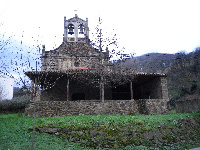
The first stretch of this section starts at Campomanes, in Lena County. Following the directional signs, the route passes through the village, leaving the church of Nuestra Señora de las Nieves to the left, and crosses under the A-66 to connect with the LE-8, which runs along the Huerna River Valley towards the town of Zureda.
The route then continues along the road. In Sotiello, it veers right, crosses this town and continues along the River Teso, until the town of Zureda. Further on, the road climbs up through meadows and hardwood forests, until the village of El Vache or El Valle, where the road turns onto a gravel track to the left, before the bridge over the River Zureda.
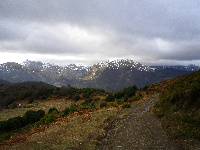
It continues to climb up the mountainside, through flat terrain covered by scrub and ferns, and reaches La Gallina Mayáu (mayéu or summer pastures), where a thematic table provides information on the panoramic views of the area, including Las Ubiñas, Peña Rueda, Agüeria Mountain Passes and Los Fontanes.
Once at La Balsa Mayáu, the route gradually descends through beech (Fagus sylvatica) and holly (Ilex aquifolium) forests until La Felguera Mayáu, a stretch of open grazing lands with beautiful views of the beech forests that populate the Mount Mofoso.
Immediately after La Felguera Mayáu, the trail heads gradually downhill, veering to the right onto QU 5, towards Alto de La Corredoria. Here, the Nature Trail continues left along the road, heading towards the town of Llanuces, in Quirós County, which is the end of this section. In this last stretch to Llanuces, there is a rest area and a viewpoint to the left of the road, where travellers can relax and enjoy the views before reaching the final destination.
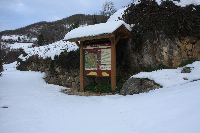
In Llanuces, it is possible to visit the Palace of Miranda, built in the sixteenth century and later renovated. The ancestral home of the Miranda Ponce de Quirós, it has an emblazoned façade and pointed doorway at one end. The two-storey building, rectangular in shape, has been accommodated to the uneven terrain and the openings have been placed at regular intervals. The estate also has a range of additional buildings, including the ground keeper's house, the “hórreo” (granary), the stables and a chapel with the image of Nuestra Señora de Candelaria (14th century).
Sites of interest
Profile
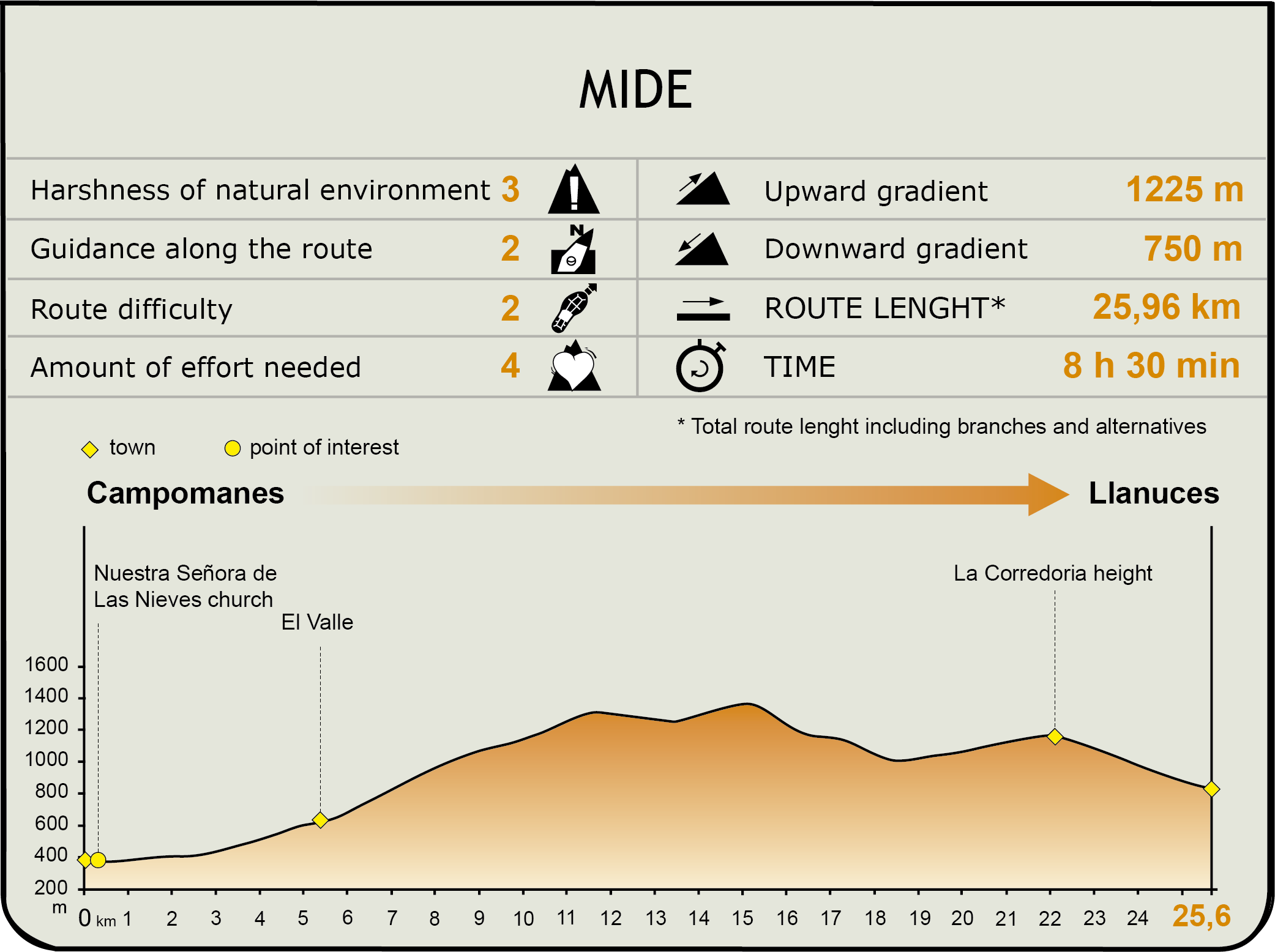
MIDE (Method for the Information of Excursions)
Featured
Further information
El Valle (El Vache)
Under Peña Chago, along the Teso riverbank, lies the village of El Valle or El Vache. The history of this area dates back to the gold mining days at Cocheu L'Oro, a small mountain pass that divides the valleys of Zureda and Tablao, and where many canals and ditches used for gold mining can still be found.
However, the industrial tradition in the Valley is associated with the loom that existed in Mendoza Palace and El Batán or "El Pisón" Palace. A wooden contraption used to "felt", adding strength and durability to the fabric produced by the loom, using the hydraulic power of the river. Blankets, quilts, skirts and saddlebags were made in this town, which today does not preserve any trace of its industrial heritage.
The Mendoza Palace stands amidst the other houses of El Valle. A well-preserved manor next to the chapel of San Julián or Encarnación, graced with a beautiful baroque altarpiece with the statue of the Virgin Mary. The 18th century Palace is a solid, cubic building, with a façade emblazoned with the family's coat-of-arms, opposite which is a stone basin and fountain.
The neighbourhood of "Encimalavicha", which overlooks the Palace, is an array of manors with a corridor that wraps around the house. Some of these houses have been refurbished, preserving the exposed stone walls and façade with the balcony and corridor. They are used today as rural apartments by tourists visiting the Huerna Valley.
Immediately after El Vache, is the small chapel of Breu. A small stone building traditionally used as a hospital for travellers, which despite countless renovations, still preserves some beautiful frescoes on its vault.
